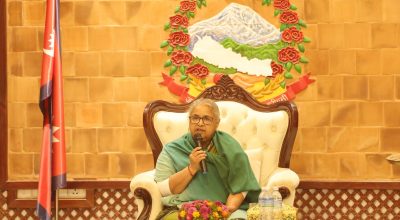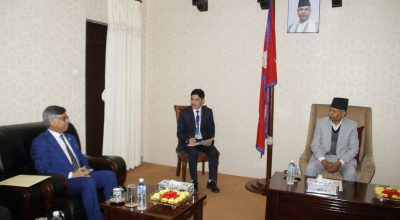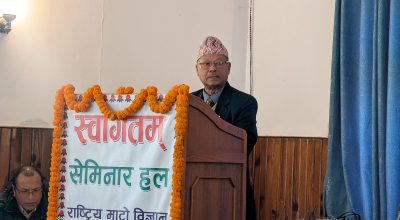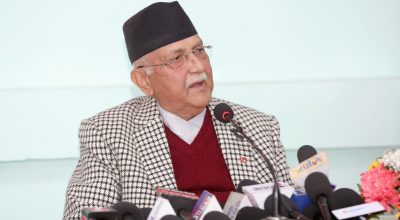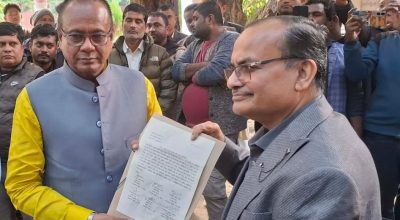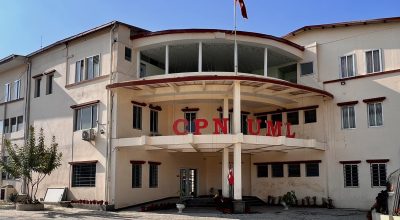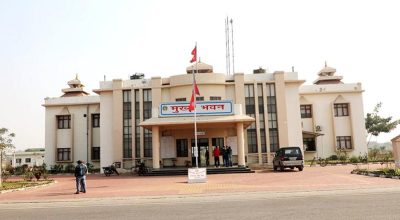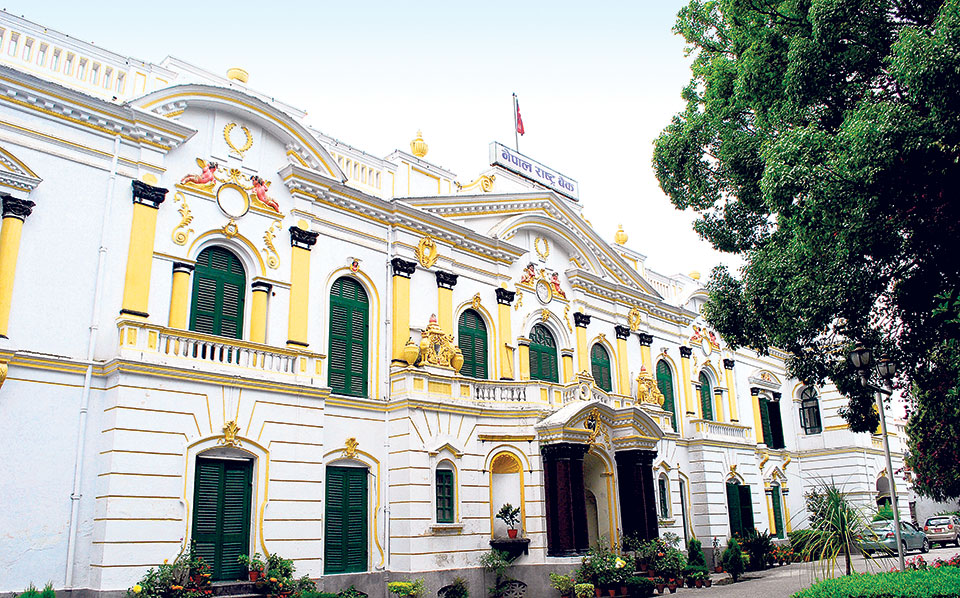
Kathmandu, Dec 14: Nepal Rastra Bank, the central bank of Nepal, has said that the remittance inflows increased 26.4 percent to Rs.477.96 billion in the review period (ending mid-November, 2023/24) compared to an increase of 20.4 percent in the same period of the previous year.
Publishing a “Current Macroeconomic and Financial Situation of Nepal” today, the NRB has said that in the US Dollar terms, remittance inflows increased 23.1 percent to 3.60 billion in the review period compared to an increase of 10.8 percent in the same period of the previous year.
Likewise, the number of Nepali workers, both institutional and individual, taking first time approval for foreign employment stands at 137,475 and taking approval for renew entry stands at 68,841. In the previous year, such numbers were 196,735 and 87,428 respectively.
Net transfer increased 24.9 percent to Rs.521.40 billion in the review period. Such a transfer had increased 20.2 percent in the same period of the previous year.
Composition of Foreign Trade
As per the Broad Economic Categories (BEC), the intermediate and final consumption goods accounted for 55.6 percent and 44.1 percent of the total exports respectively, whereas the ratio of capital goods in total exports remained negligible at 0.3 percent in the review period. In the same period of the previous year, the ratio of intermediate, capital and final consumption goods remained 54.6 percent, 0.02 percent and 45.4 percent of total exports respectively.
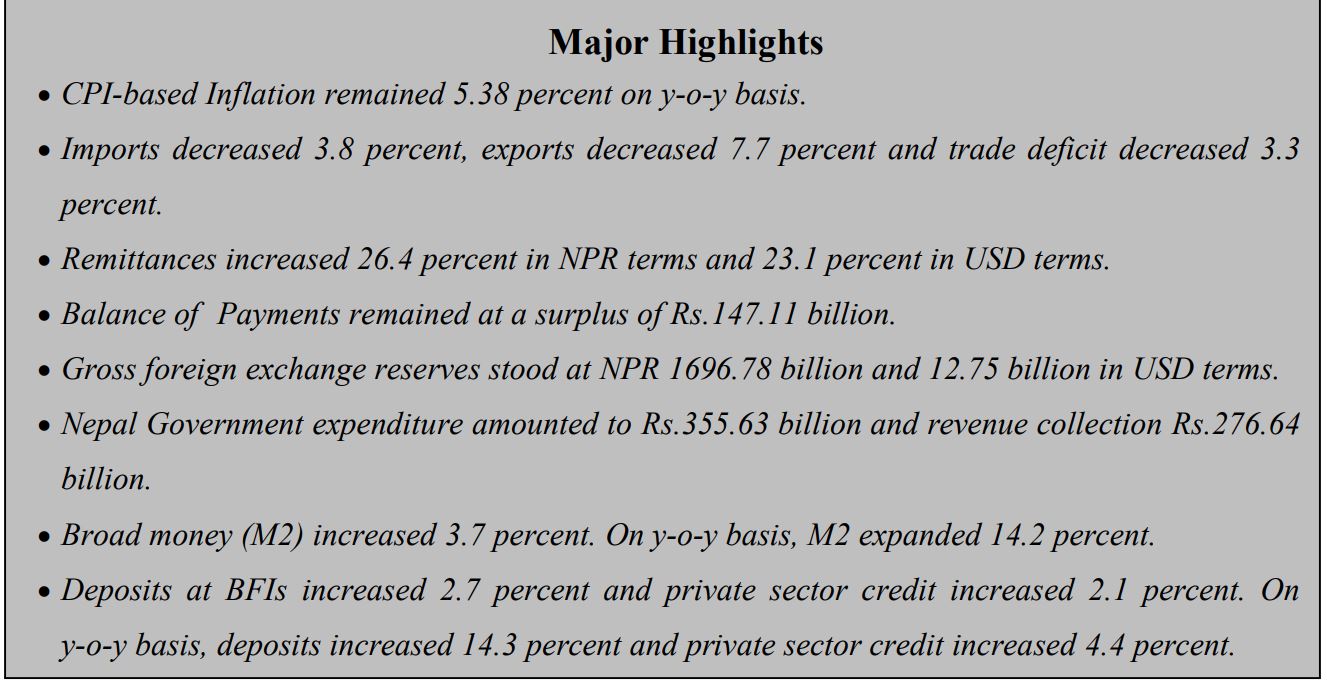
On the imports side, the share of intermediate goods remained 49.2 percent, capital goods 8.8 percent and final consumption goods 42.1 percent in the review period. Such ratios were 53.0 percent, 8.3 percent and 38.7 percent respectively in the same period of the previous year.
Composition of Foreign Trade
As per the Broad Economic Categories (BEC), the intermediate and final consumption goods accounted for 55.6 percent and 44.1 percent of the total exports respectively, whereas the ratio of capital goods in total exports remained negligible at 0.3 percent in the review period.
In the same period of the previous year, the ratio of intermediate, capital and final consumption goods remained 54.6 percent, 0.02 percent and 45.4 percent of total exports respectively.
On the imports side, the share of intermediate goods remained 49.2 percent, capital goods 8.8 percent and final consumption goods 42.1 percent in the review period. Such ratios were 53.0 percent, 8.3 percent and 38.7 percent respectively in the same period of the previous year.
Foreign Exchange Reserves
Gross foreign exchange reserves increased 10.2 percent to Rs.1696.78 billion in mid-November 2023 from Rs.1539.36 billion in mid-July 2023. In the US dollar terms, the gross foreign exchange reserves increased 8.9 percent to 12.75 billion in mid- November 2023 from 11.71 billion in mid-July 2023.
Of the total foreign exchange reserves, reserves held by NRB increased 10.8 percent to Rs.1490.83 billion in mid November 2023 from Rs.1345.78 billion in mid-July 2023. Reserves held by banks and financial institutions (except NRB) increased 6.4 percent to Rs.205.95 billion in mid-November 2023 from Rs.193.59 billion in mid-July 2023.
The share of Indian currency in total reserves stood at 21.8 percent in mid- November 2023.
Foreign Exchange Adequacy Indicators
Based on the imports of four months of 2023/24, the foreign exchange reserves of the banking sector is sufficient to cover the prospective merchandise imports of 13.6 months, and merchandise and services imports of 11.3 months.
The ratio of reserves-to-GDP, reserves-to-imports and reserves-to-M2 stood at 31.5 percent, 94.3 percent and 26.7 percent respectively in mid November 2023. Such ratios were 28.6 percent, 83.0 percent and 25.1 percent respectively in mid-July 2023.
Full Text
Current-Macroeconomic-and-Financial-Situation-English-Based-on-Four-Months-data-of-2023.24




